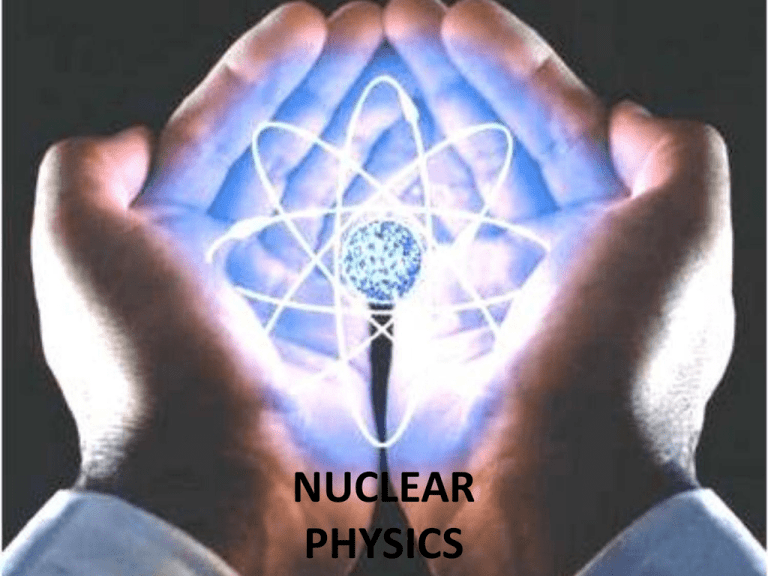In the contemporary landscape of education, the accessibility of knowledge has transcended traditional classrooms, catalyzing an intriguing inquiry: is it feasible to study nuclear physics at home? This exploration unveils both the immense potential and significant challenges embedded in such an endeavor. Through a meticulous examination of resources, methodologies, and community engagement, one can glean insights into how aspiring physicists can embark on this intellectual journey from the confines of their own domicile.
To begin with, the constituents of nuclear physics are fundamentally rooted in the principles of matter and energy at the atomic level. It integrates concepts from quantum mechanics, electromagnetism, and thermodynamics, fostering a holistic understanding of physical phenomena. At the home study level, one must first comprehend the foundational concepts that underpin this discipline. Online educational platforms, such as Khan Academy and Coursera, offer an array of introductory courses that articulate these fundamental principles. These platforms frequently comprise video lectures, interactive quizzes, and community forums, cultivating a comprehensive learning environment that is accessible from any location.
Additionally, essential textbooks serve as indispensable resources for self-directed learners. Canonical texts, such as “Introduction to Nuclear Physics” by John Lilley, elucidate complex ideas through methodical explanations and illustrative diagrams. These texts often converge theoretical discussions with practical applicability, drawing readers into the intricate world of particle interactions and nuclear reactions. Notably, many of these authors possess academic expertise, ensuring that the material reflects the forefront of research and understanding in the field.
As learners progress into more advanced territories, they will encounter sophisticated concepts such as nuclear fission and fusion, radioactive decay, and quantum tunneling. At this juncture, augmenting one’s studies with experimental physics becomes pivotal. While the intricacies of nuclear physics often preclude certain experiments from being conducted at home due to safety concerns, simpler experiments related to radiation detection and nuclear reactions’ qualitative understanding can be performed with appropriate apparatus. For instance, utilizing a Geiger counter allows individuals to measure background radiation, providing tangible engagement with core concepts.
Moreover, access to online simulations can bridge the gap between theoretical knowledge and experiential learning. Websites such as PhET Interactive Simulations from the University of Colorado, Boulder, facilitate virtual exploration of nuclear reactions, allowing students to manipulate variables and observe outcomes in a risk-free environment. Such tools not only bolster conceptual comprehension but also ignite curiosity, prompting further inquiry into the underlying mechanisms of nuclear processes.
Akin to any academic pursuit, the significance of community cannot be overstated. Engaging with fellow learners and seasoned experts through online forums or social media groups dedicated to nuclear physics fosters a collaborative atmosphere conducive to intellectual growth. Platforms like Reddit and Stack Exchange host vibrant discussions, where queries can be posed and addressed in real-time. Thus, the home study of nuclear physics blossoms into a collective endeavor, enriching the learning experience and providing diverse perspectives.
However, significant challenges loom on the horizon for those who undertake this path. The complexity of nuclear physics can be formidable, often necessitating a strong mathematical foundation. Differential equations, linear algebra, and calculus are integral to grasping advanced topics in the discipline. Therefore, aspiring nuclear physicists must proactively seek out supplemental resources to solidify their mathematical prowess, be it through online courses, textbooks, or tutoring services. The interplay of mathematics and physics forms a cornerstone of understanding that cannot be overlooked.
Furthermore, the ever-evolving nature of nuclear physics, coupled with the contemporary dialogues surrounding nuclear energy and safety, demands that learners remain informed about current advancements in the field. Following reputable scientific journals, such as “Physical Review C,” or engaging with podcasts and webinars hosted by leading physicists can serve to keep one abreast of the latest findings and technological innovations. This commitment to continued education not only enhances individual knowledge but also cultivates informed discourse on pressing nuclear-related issues.
A more practical aspect of studying nuclear physics at home is the ethical consideration regarding the handling and dissemination of knowledge related to nuclear technology. An understanding of the implications of nuclear research is crucial, particularly as discussions concerning nuclear power and weapons proliferate in global discourses. Therefore, incorporating ethical studies into one’s learning regime is essential to becoming a responsible member of the scientific community capable of contributing positively to society.
In summation, the pursuit of nuclear physics from home is not only conceivable but has become increasingly viable through a plethora of resources and communal support networks. The intellectual engagement this endeavor incites, coupled with the challenge it presents, offers an enriching experience that transcends geographical limitations. In grappling with fundamental and advanced concepts, employing experimental approaches, and participating in discourse, individuals can cultivate a robust understanding of nuclear physics. Such an academic journey requires dedication, curiosity, and a willingness to navigate complexities, yet the rewards of insight into one of nature’s most profound secrets beckon enticingly to those who dare to uncover them.












